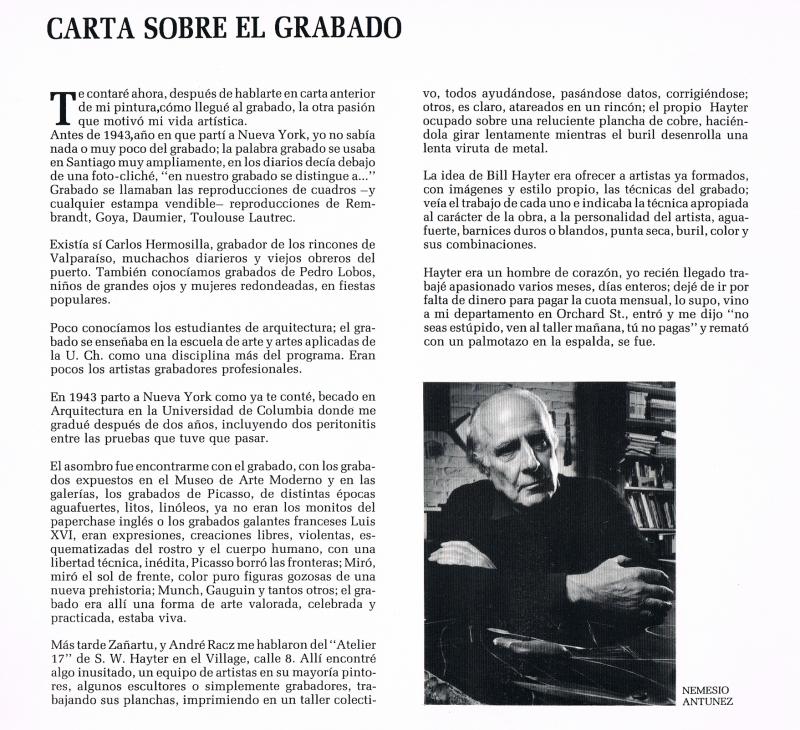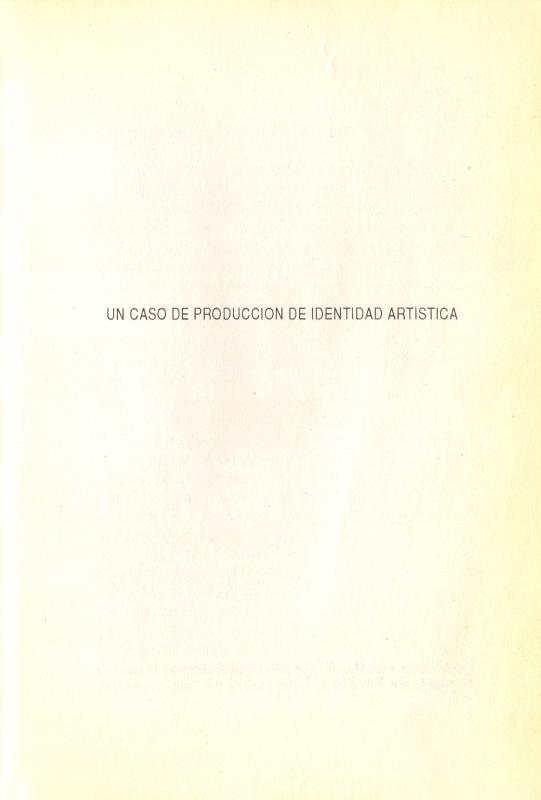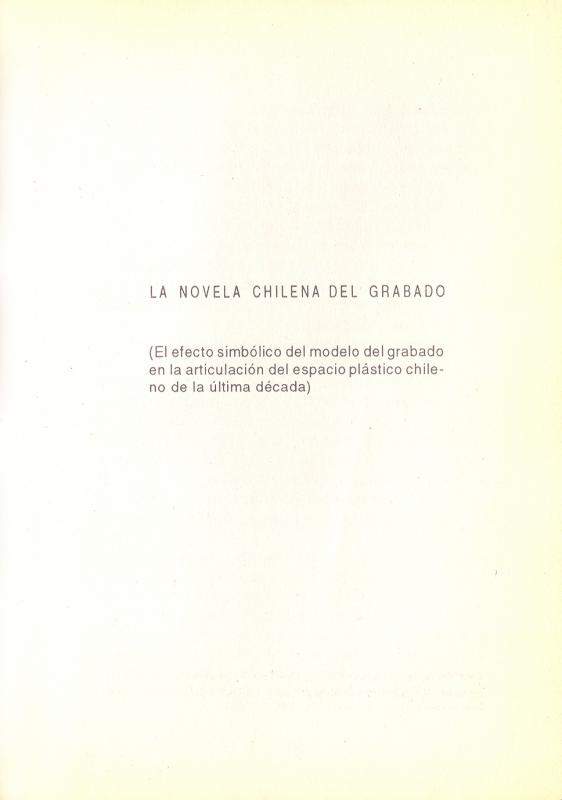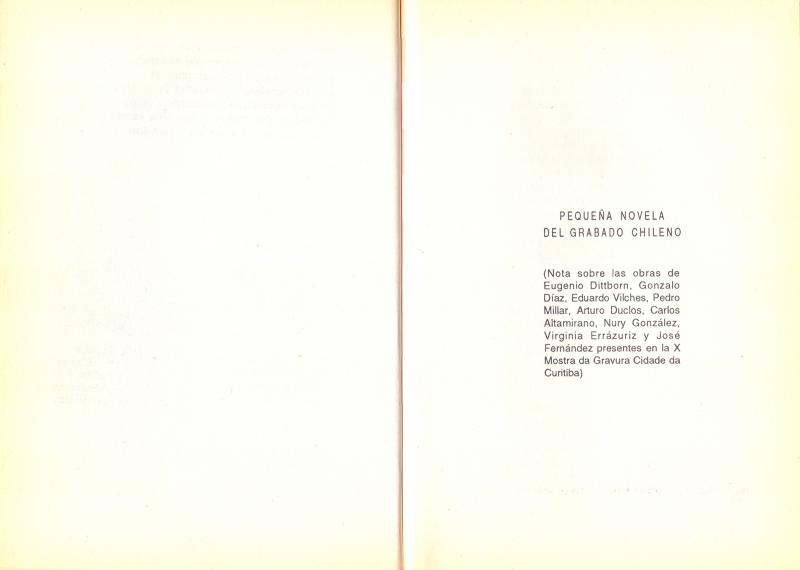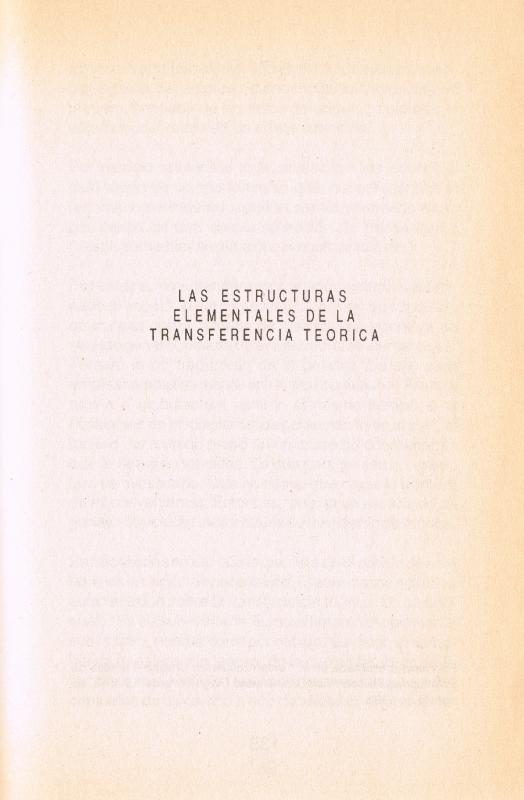The artist and architect Nemesio Antúnez (1918–1993) wrote this text for the catalogue for the III Bienal Americana de Grabado in Santiago, which was held at the Museo de Arte Contemporáneo de la Universidad de Chile (1968). Antúnez organized the first edition of this event in 1963, when he was the director of the Museo de Arte Contemporáneo (MAC). The poet Thiago de Mello (b. 1926), who was at the time the Brazilian cultural attaché in Chile, and the artist Carlos Ortúzar (1935–1985) joined Antúnez to form the first executive committee. Attendees included printmakers from Costa Rica, Uruguay, Cuba, Mexico, Canada, Paraguay, Colombia, Bolivia, Guatemala, Argentina, the United States, Nicaragua, and Chile. The event was intended as a forum where printmakers from Latin American countries could meet, share their work, and discuss art and printmaking.
Antúnez had been involved in printmaking since he attended the Atelier 17, a workshop directed by Stanley William Hayter (1901–1988), a notable figure in this particular field. When Antúnez returned to Chile in 1956—excited by what he had experienced in France—he started Taller 99. Participating artists and printmakers included Luz Donoso (1921–2008), Pedro Millar (1930–2014), Eduardo Vilches (b. 1932), Roser Bru (1923–2021), Dinora Doudtchitzky (1914–2004), and Jaime Cruz (b. 1934), among others. The workshop became known as a place that encouraged experimentation in art and fostered a spirit of comradeship and working in groups. It offered formal art training as well; a number of its artists were involved in the creation of the Escuela de Arte de la Pontificia Universidad Católica de Chile in 1958. Taller 99 moved into the institution’s Casa Central, where it remained until 1961 when it moved into the Escuela’s premises. This allowed the Escuela to offer something different: whereas the Facultad de Artes de la Universidad de Chile was known for its courses on painting and sculpture, the workshop could provide instruction in printmaking for students at the Escuela de Arte. [On the subject of printmaking, see the following in the ICAA Digital Archive: “Carta sobre el grabado” (doc. no. 749419) by Antúnez; “El grabado contemporáneo” (doc. no. 773546) by Enrique Solanich; and “Memoria fracturada del grabado chileno” (doc. no. 767023) by Jaime Cruz.]
Initiatives taken in Chile, such as the Bienal Americana de Grabado or the Taller 99, or the importance of printmaking at the Escuela de Arte, clearly show the fundamental value of this medium in the evolution of Chilean art. Something else to consider as regards this medium is that the art critic and curator Justo Pastor Mellado (b. 1949), in his book Novela chilena del grabado (Chilean Novel About Printing, 1995), calls for a historiographic reading of the country’s art that is rooted in printmaking. [On this matter, see “Un caso de producción de identidad artística” (doc. no. 736039); “La novela chilena del grabado” (doc. no. 736035); “Pequeña novela del grabado chileno” (doc. no. 736031); and “Las estructuras elementales de la transferencia” (doc. no. 736043).]

